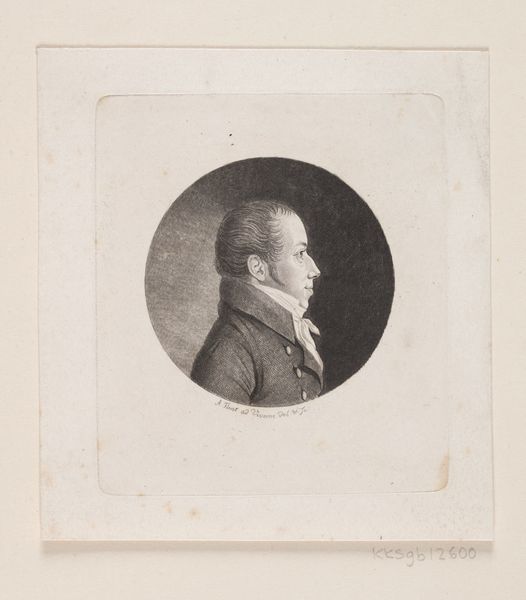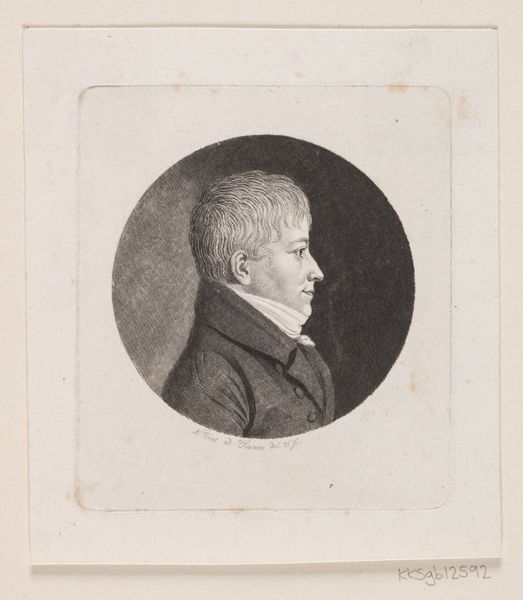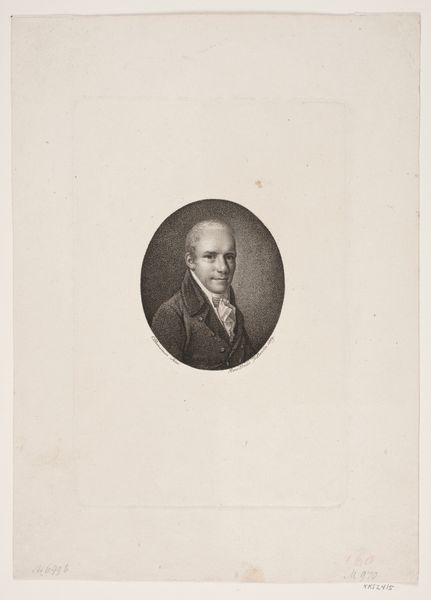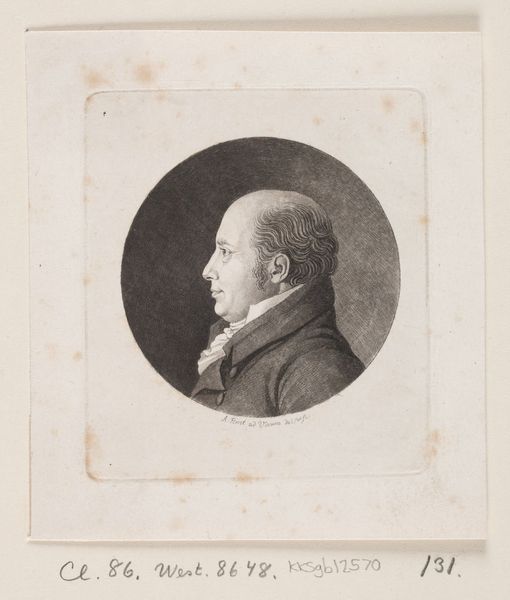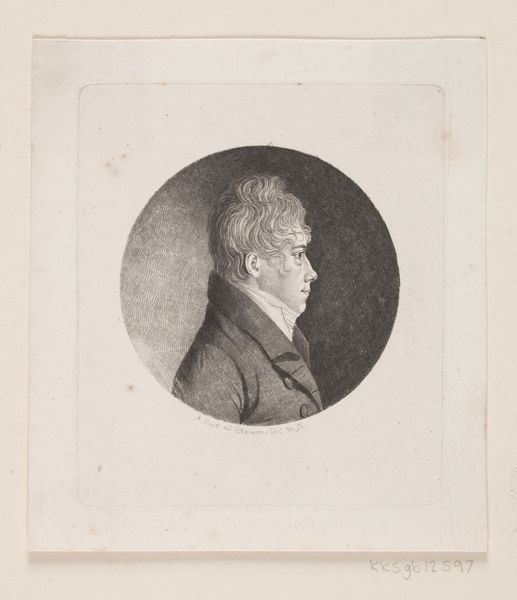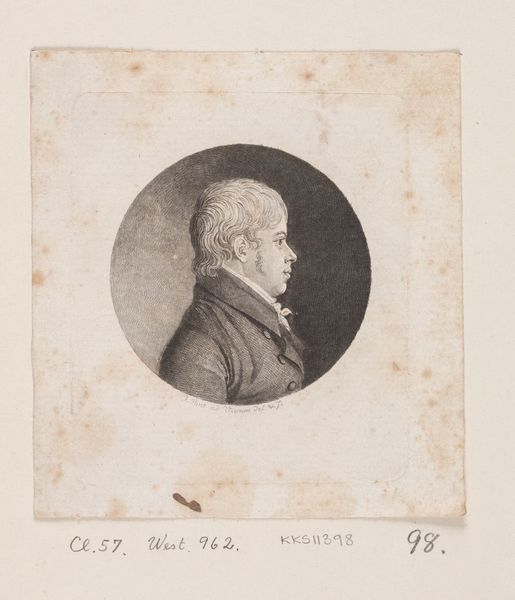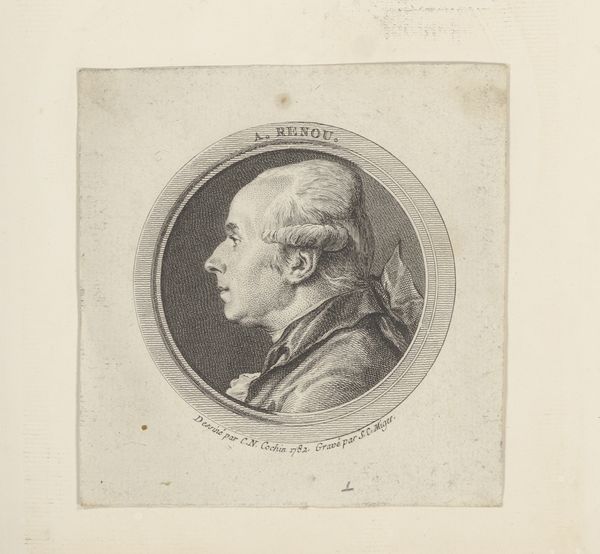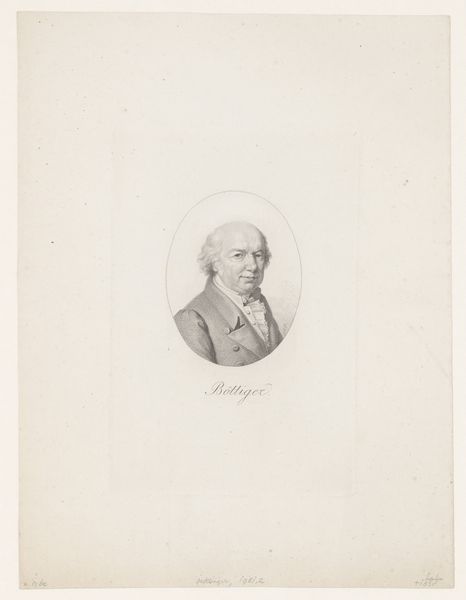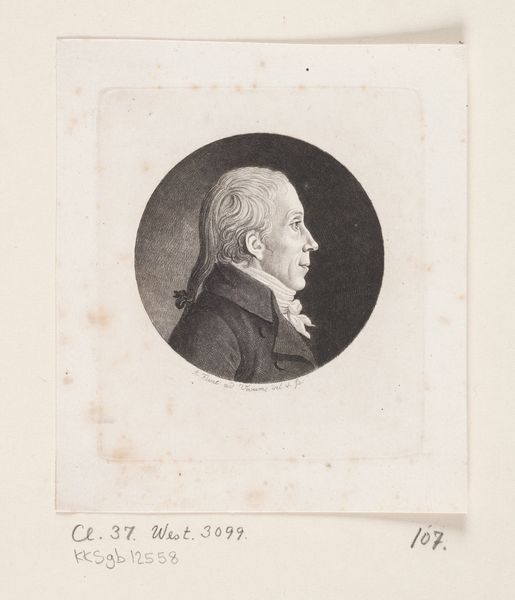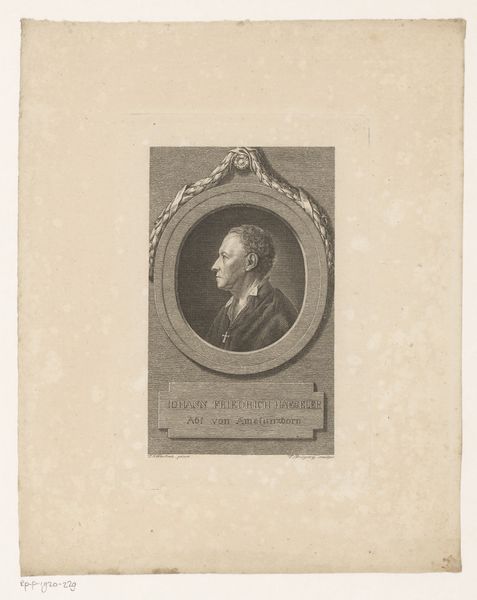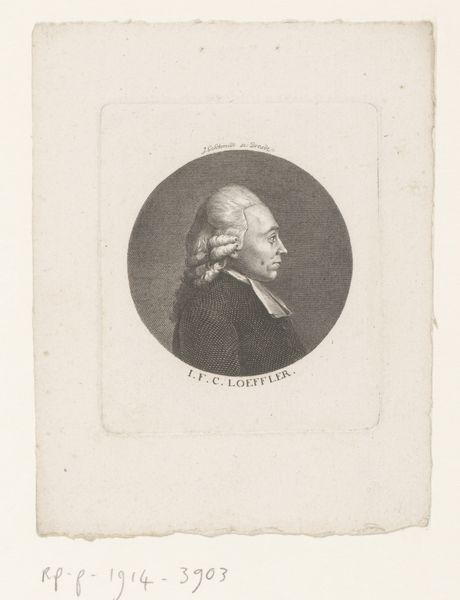
print, engraving
#
neoclacissism
# print
#
form
#
line
#
engraving
#
realism
Dimensions: 58 mm (None) (billedmaal), 94 mm (height) x 83 mm (width) (plademaal)
Editor: We're looking at an engraving called "Unknown Man's Portrait" created sometime between 1767 and 1824. It's attributed to Andreas Flint. I’m struck by how formal and proper the figure looks, but there's also something melancholic about his profile. What catches your eye? Curator: Melancholy, yes! Perhaps he has unrequited love on his mind, or the woes of managing a vast estate… The line work here is so precise, isn't it? Almost clinical. It really emphasizes the contours of his face. It reminds me of the neo-classical fascination with idealized forms and sharp detail. Notice the subtle use of light and shadow to sculpt his features. Do you see the cross-hatching? Editor: Yes, it creates a sense of depth, almost like a photograph. So you are thinking the artist's intent was to explore the ideals of form? Curator: Exactly. There's a strong sense of objective representation, aiming for a timeless depiction, a portrait stripped of excessive emotion or narrative. But for me, the man’s posture feels slightly stiff, hinting at social constraints and expectations of the period, you know? A dance with realism versus idealization, the tight ponytail of the period perhaps a beautiful reminder of past hopes? Editor: That’s interesting, the push and pull. It does feel like he's trapped between looking real and fitting in an ideal! I'd never considered those things! Curator: Indeed. Art often works best that way, no? The mystery invites the wonder, then, blam! Insights abound!
Comments
No comments
Be the first to comment and join the conversation on the ultimate creative platform.
